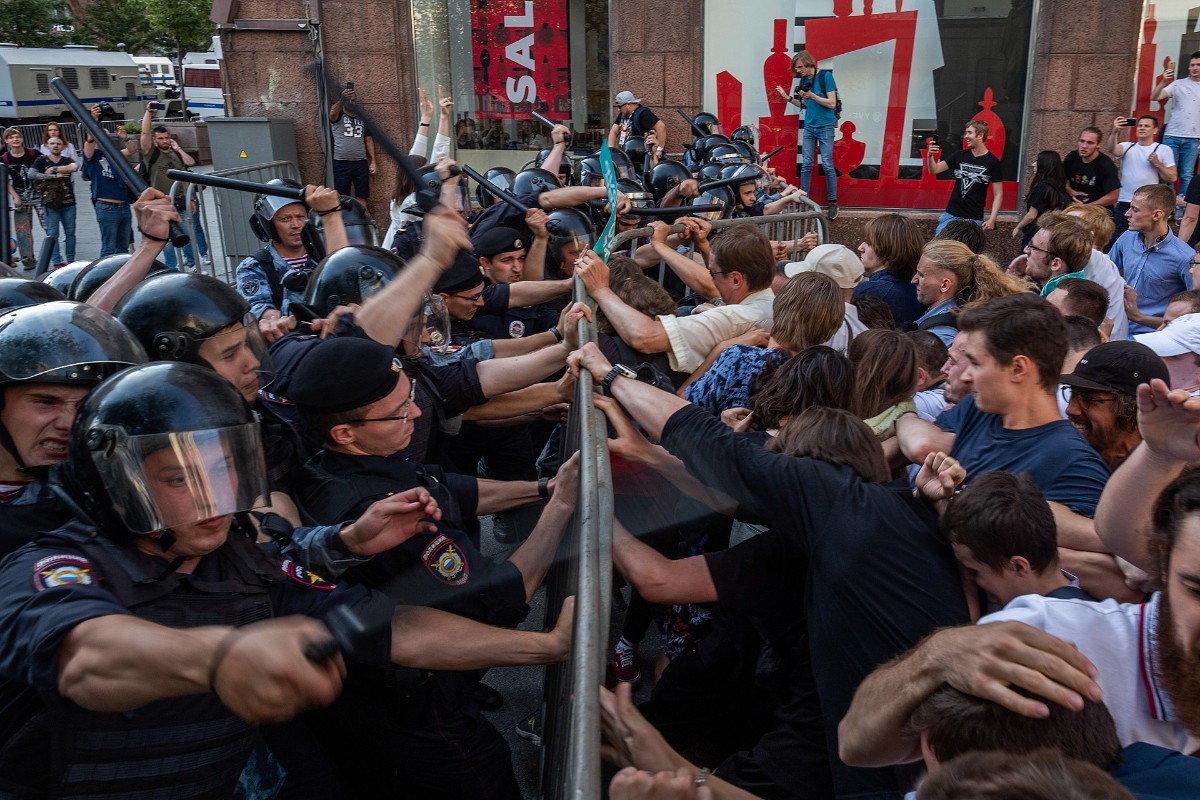 Photo Courtesy of Ilya Varlamov on Wikimedia Commons
Photo Courtesy of Ilya Varlamov on Wikimedia Commons
Moscow’s Summer of Discontent: Recent Protests and Their Fragile Potential
Amidst the recent inundation of Russia-related headlines covering everything from nuclear arms control to cyber war, it might have been easy to miss a key top story coming out of Russia this summer: a wave of civil society activity that shows profound resistance to Putin’s regime, but whose impact may only be symbolic.
On August 10th, more than 50,000 Russians attended a rally in Moscow, marking the sixth consecutive week of public protests in the city. They began in July when the Kremlin barred opposition candidates from running for city council. The police’s aggressive response to the protests has only fueled bigger demonstrations, including a hunger strike from one barred candidate.
This summer shows that Russians are discontented with the leadership in Moscow, and perhaps also a deeper frustration with Putin’s regime.
Promises Kept?
Putin has held Russia in his grip for all of the 21st century, as President from 2000 to 2008 and since 2012, after serving as Prime Minister during the four-year interim. Throughout these two decades, he has continued to promise two things to his constituents: restoration of Russia’s global standing and economic revitalization.
Yet Putin’s record has been mixed. One analysis shows that Russia’s economy has remained the same size since 2008, while citizens’ average real incomes have declined. His ambitious plans seem to have yielded little progress. Putin’s first sweeping ten-year economic plan was brought to a halt by the 2008 financial crisis. Next, he launched the Long-Term Socio-Economic Development plan that was meant to operate through 2020, but never reached its implementation stage. In 2012, he signed the first round of “May Decrees” investing $390 billion for economic overhaul, but which proved insufficient to prevent stagnation.
Besides a floundering economy, Russia under Putin has also been marked by record-high levels of corruption and a struggle to keep up with China’s strengthening presence in the Eurasian region through its One Belt One Road project.
ASP has written previously about Russian discontent with Putin’s regime. Slow government response to the recent wildfires in Siberia, poor management of trash, and election fraud are a few examples of issues that have sparked widespread citizen outcry. Russians also cite rising costs of living and the unpopular plan to raise the retirement age as areas in which Putin has failed to live up to expectations. This summer’s activism shows that these grievances, combined with a burgeoning civil society, are enough to cast doubt on Putin’s ironclad hold on power.
An Uncertain Future
It’s hard to imagine Russia without Putin, but does this summer’s wave of activism signal the true vulnerability of his regime? It’s hard to tell, but there are some signs suggesting that this summer’s events might presage substantial change, or at least desire for it among the public.
Putin’s reputation among citizens has crashed to a historic low: as of May 2019, only 31.7% of Russians expressed “trust” in the President, while 64% “approve” of his activities. According to long-term data by the Levada Center, the annexation of Crimea brought Putin a big boost in popularity (86% approval rating in March 2014), but his ratings have been dropping steadily ever since.
It is worth noting the amount of international media coverage Russia’s summer activism has attracted. First, there’s journalist Ivan Golunov, whose arrest elicited global sympathy. And there’s Olya Misik, the 17-year old activist featured in The Financial Times as a symbol of the protest movement, evoking parallels to Sweden’s Greta Thunberg, whose action on climate change helped spur a new generation of civil leaders. The global coverage of these individuals has ensured that Russia’s most recent wave of activism is noticed worldwide.
Russia may not be near a true tipping point, but it is important to bear in mind the long-term resiliency of Putin’s administration and his willingness to use ruthless measures to maintain power, which are increasingly within reach as his National Guard’s mission expands. Indeed, we have seen this play out before: the 2011 anti-Putin protests were at the time viewed as a watershed moment, but were met with mass arrests and repression. And let’s not forget the 2015 assassination of Boris Nemtsov, the promising rising star whose anti-authoritarianism and pro-reform policies posed an unacceptable risk to Putin’s regime. Today’s most prominent opposition politician and Nemstov-equivalent, Alexei Navalny, was recently hospitalized, possibly due to poisoning. Upon his release from prison today, he promised continued leadership of protests as the September 8th Duma elections draw near.
The staying power of this summer’s wave of activism seems to depend on whether Russian activists are able to survive long enough to transform street protests into actual governmental change.





